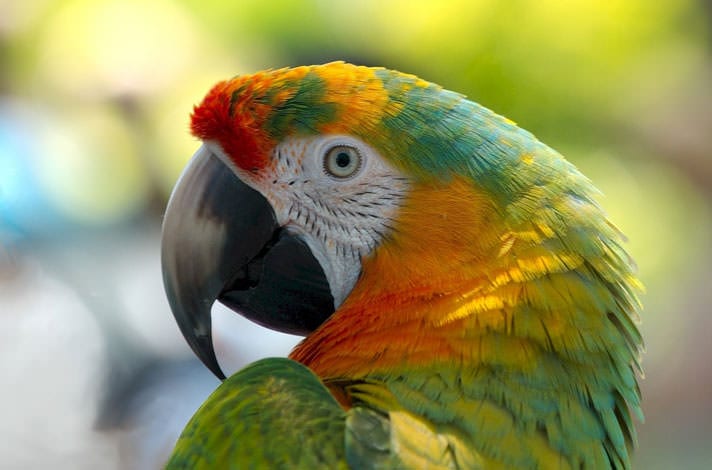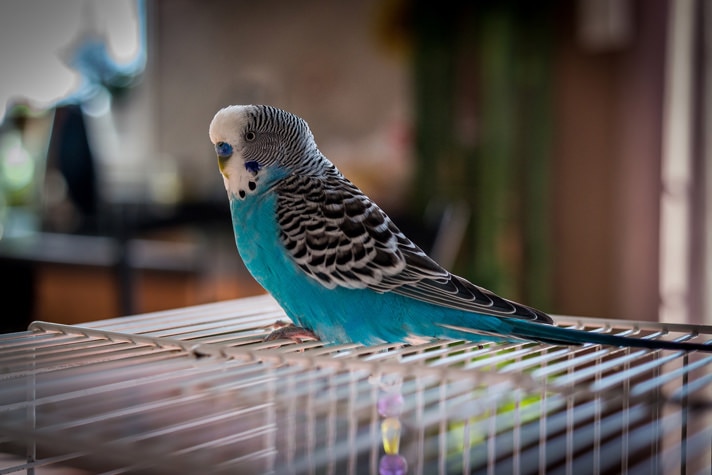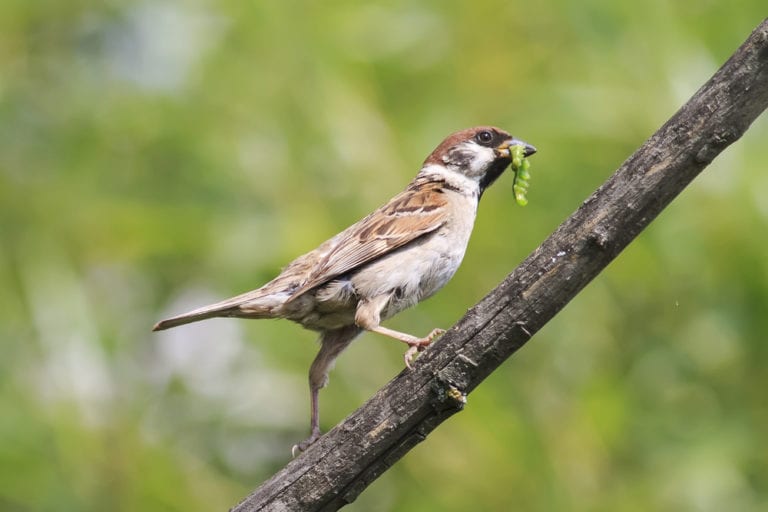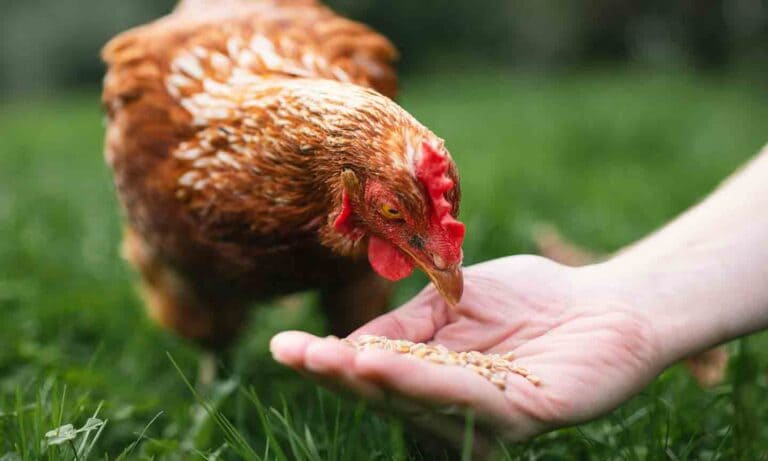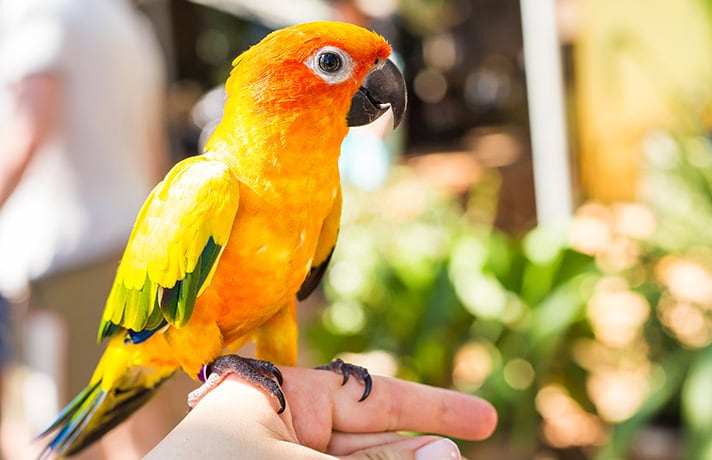Parrot body language can be hilarious and interesting to observe. Whether they’re flapping their wings, hanging upside down or ruffling their feathers—parrots always seem to be telling us something.
Take the quirky head-bob for example. When parrots display this behavior, it looks like they are enthusiastically nodding their head “yes” or, when their beaks are parted, like they’re laughing—probably at our expense. But are they?
Why do parrots bob their head up and down? Our experts weigh in.
Polly May Really Want a Cracker
Parrot head bobbing has become a source of entertainment. There are tons of videos out there that feature parrots bobbing their heads. But they’re doing this behavior to get more “likes” from their fans. In fact, they may be doing it simply for some parrot bird food.
“Baby parrots bob their heads when they are begging for food,” says Dr. Laurie Hess, DVM, diplomate ABVP (Avian Practice) of Veterinary Center of Birds and Exotics in Hills, New York. “Owners of un-weaned parrots should pay attention to this sign, as it may indicate that their birds are hungry and need to be fed.”
To ensure your baby parrot is getting the nutrition he needs, stock up on nutritious baby parrot food. Foods like Kaytee Exact Hand Feeding formula baby bird food give baby birds high levels of nutrients to help them gain weight and reduce the need for overnight feedings. Look for foods that contain probiotics, prebiotics, and digestive enzymes that support gentle digestion.
Hungry for Attention
Adult parrots may bob their heads when they’re hungry for something else entirely: attention.
“This stems from behavior as a young bird, bobbing their head for their parents to feed them,” says Johanna Black, manager of wildlife at the EcoTarium in Worcester, Massachusetts.
It is often observed with birds that crave interaction with their owners or keepers, she says. If it’s attention your parrot craves, bird perches and bird toys is an excellent way to bond and interact with your bird. The JW Pet Hol-ee Roller bird toy is made from 100 percent natural rubber and can be hung from the top of the cage. You can ring the bell to pique your bird’s curiosity or pack it with bits of paper, wood or bird treats to stimulate his natural foraging instincts.
For senior birds, the Super Bird Creations peacock senior bird toy allows your bird to climb, perch and gnaw on the different textures of wooden beads, pine slats and strings. Chewing different textures is an enriching activity for your bird can help relieve stress, boredom and head-bobbing.
Bobbing With Excitement or Anger
Just when you thought you’ve figured out the infamous question, “Why do parrots bob their head up and down?” here’s another theory. According to Stephanie Edlund, a Certified Parrot Behavior Consultant and IAABC Parrot Division Chair, parrots may also exhibit this behavior when they’re excited.
Some situations where your parrot may get excited are right before you feed them and play with them. But wait, there’s more. “They bob their heads when regurgitating, a type of courtship behavior, and sometimes even when they are really angry,” she says.
Other Reasons to Consider
At the end of the day, understanding parrot body language isn’t as easy as it looks and since we can’t read our parrots’ minds.
“Parrots have a whole myriad of communicative behaviors, but we often need more information to know what they mean,” Edlund says. “We can never really say that behavior x means y. Instead, we have to look at a lot of little details and also the context in which a behavior occurs.”
Understanding your parrot is a lot like learning to read, she says. You have to learn the letters to form the words and then learn all the little nuances of context and grammar before you can understand the meaning. The best way to understand what your parrot is trying to tell you when he bobs his head—if he’s trying to tell you anything at all—is to spend time with him and acquaint yourself with his personality and moods. You can also do your research. Books like Birds for Dummies and others can help answer many of your questions on how to care for your bird and what their body language means.
Chris Brownlow contributed to this report.
Featured Image: Via Pixabay
Share:
